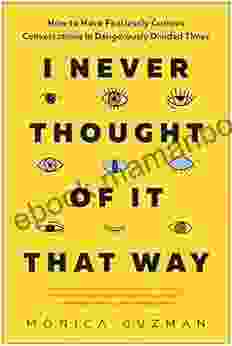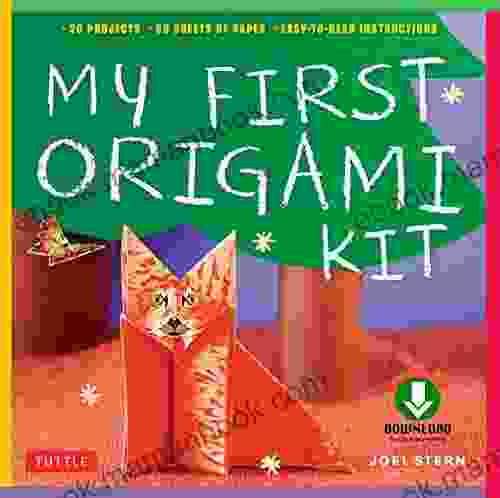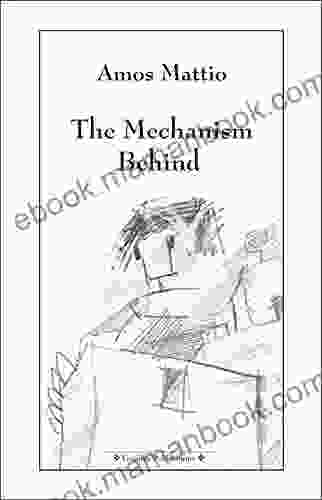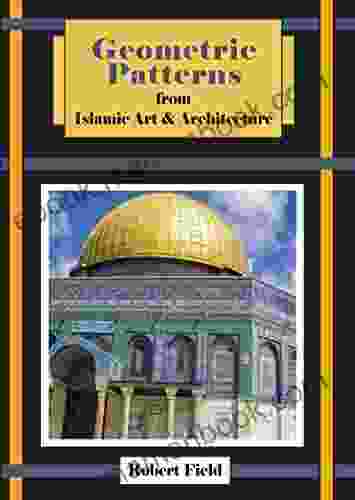Geometric Patterns From Islamic Art and Architecture: A Journey into Mathematical Harmony

Geometric patterns have played an integral role in Islamic art and architecture for centuries, captivating the senses with their intricate beauty and profound symbolism. These patterns are not mere decorative elements; they embody mathematical principles, cultural beliefs, and artistic traditions that have shaped the Islamic world. From the exquisite mosaics of the Alhambra to the soaring minarets of the Great Mosque of Cordoba, these patterns transcend cultural and temporal boundaries, inspiring awe and admiration in all who behold them.
Islamic geometric patterns are rooted in mathematical concepts, primarily geometry and number theory. Muslim scholars and mathematicians, such as Alhazen and Omar Khayyam, made significant contributions to the field, developing theorems and techniques that laid the foundation for these intricate designs. The patterns are often constructed using regular polygons, such as squares, triangles, and hexagons, which are then arranged in interlocking and overlapping configurations. These arrangements are guided by mathematical principles, creating a sense of order and harmony.
Beyond their mathematical foundations, Islamic geometric patterns also carry profound symbolic and religious significance. The repetition of geometric forms represents the infinite nature of God and the interconnectedness of all creation. The use of symmetry and balance conveys the idea of divine order and perfection. Certain shapes and patterns have specific meanings, such as the square representing stability, the circle representing eternity, and the hexagon representing harmony and grace.
4.4 out of 5
| Language | : | English |
| File size | : | 43227 KB |
| Screen Reader | : | Supported |
| Print length | : | 66 pages |
| Lending | : | Enabled |
The development of geometric patterns in Islamic art and architecture has evolved over time, influenced by cultural, geographical, and technological factors. Early examples can be found in the Umayyad period (661-750 CE),where simple geometric patterns adorned the Great Mosque of Damascus. During the Abbasid period (750-1258 CE),the use of geometric patterns became more elaborate and complex, as seen in the exquisite mosaics of the Dome of the Rock in Jerusalem. The Seljuk and Timurid periods (11th-15th centuries CE) witnessed further advancements, with intricate patterns covering entire facades and interiors of buildings.
Geometric patterns are not limited to decorative arts; they have also been extensively used in Islamic architecture. The facades of mosques, madrasas, and palaces are often adorned with geometric tilework, creating stunning visual effects. Patterns are also incorporated into structural elements, such as columns, arches, and domes, reinforcing the architectural integrity of buildings while adding aesthetic appeal. The use of geometric patterns in architecture serves both functional and aesthetic purposes, enhancing the overall beauty and functionality of structures.
- The Alhambra, Granada, Spain: The Alhambra is renowned for its intricate geometric patterns, particularly the "honeycomb" pattern in the Hall of the Two Sisters. This pattern consists of interlocking octagons and hexagons, creating a mesmerizing optical illusion.
- The Great Mosque of Cordoba, Cordoba, Spain: The Mezquita features a forest of columns, each adorned with unique geometric patterns. The horseshoe arches are decorated with intricate interlacing designs, highlighting the mathematical precision of Islamic craftsmen.
- The Jameel Arts Centre, Dubai, UAE: This contemporary art center incorporates geometric patterns into its facade, reflecting the region's rich architectural heritage. The patterns are created using perforated metal panels, casting intricate shadows that change throughout the day.
Geometric patterns from Islamic art and architecture continue to inspire contemporary artists and designers. They are incorporated into a wide range of products and mediums, including textiles, ceramics, jewelry, and furniture. The timeless beauty and mathematical principles underlying these patterns make them relevant and appealing in modern contexts.
Geometric patterns have been an inseparable part of Islamic art and architecture for centuries. Rooted in mathematical concepts and imbued with symbolic and religious meanings, these patterns embody the cultural and artistic traditions of the Islamic world. From the elaborate mosaics of palaces to the intricate designs of mosques, geometric patterns have captivated the hearts and minds of people across generations. They continue to inspire contemporary artists and designers, bridging the past and present through the timeless language of geometry and beauty.
4.4 out of 5
| Language | : | English |
| File size | : | 43227 KB |
| Screen Reader | : | Supported |
| Print length | : | 66 pages |
| Lending | : | Enabled |
Do you want to contribute by writing guest posts on this blog?
Please contact us and send us a resume of previous articles that you have written.
 Top Book
Top Book Novel
Novel Fiction
Fiction Nonfiction
Nonfiction Literature
Literature Paperback
Paperback Hardcover
Hardcover E-book
E-book Audiobook
Audiobook Bestseller
Bestseller Classic
Classic Mystery
Mystery Thriller
Thriller Romance
Romance Fantasy
Fantasy Science Fiction
Science Fiction Biography
Biography Memoir
Memoir Autobiography
Autobiography Poetry
Poetry Drama
Drama Historical Fiction
Historical Fiction Self-help
Self-help Young Adult
Young Adult Childrens Books
Childrens Books Graphic Novel
Graphic Novel Anthology
Anthology Series
Series Encyclopedia
Encyclopedia Reference
Reference Guidebook
Guidebook Textbook
Textbook Workbook
Workbook Journal
Journal Diary
Diary Manuscript
Manuscript Folio
Folio Pulp Fiction
Pulp Fiction Short Stories
Short Stories Fairy Tales
Fairy Tales Fables
Fables Mythology
Mythology Philosophy
Philosophy Religion
Religion Spirituality
Spirituality Essays
Essays Critique
Critique Commentary
Commentary Glossary
Glossary Bibliography
Bibliography Index
Index Table of Contents
Table of Contents Preface
Preface Introduction
Introduction Foreword
Foreword Afterword
Afterword Appendices
Appendices Annotations
Annotations Footnotes
Footnotes Epilogue
Epilogue Prologue
Prologue Lois Ellen Frank
Lois Ellen Frank Ann Omasta
Ann Omasta D E Malone
D E Malone Hirohiko Araki
Hirohiko Araki Michel Gauthier
Michel Gauthier David Berger
David Berger Stanley I Greenspan
Stanley I Greenspan Christopher Brookmyre
Christopher Brookmyre Jason Deere
Jason Deere James Allen
James Allen Sandy Feldstein
Sandy Feldstein Patrice Gibertie
Patrice Gibertie J T Williams
J T Williams Darren Heart
Darren Heart Kathy Terrill
Kathy Terrill Chris Pegula
Chris Pegula Mingjie Cai
Mingjie Cai Yusei Matsui
Yusei Matsui Cynthia L Uline
Cynthia L Uline Nathan Williams
Nathan Williams
Light bulbAdvertise smarter! Our strategic ad space ensures maximum exposure. Reserve your spot today!
 Brent FosterFollow ·4.5k
Brent FosterFollow ·4.5k Norman ButlerFollow ·8.7k
Norman ButlerFollow ·8.7k Ismael HayesFollow ·15.4k
Ismael HayesFollow ·15.4k Quincy WardFollow ·19.1k
Quincy WardFollow ·19.1k Neal WardFollow ·3.9k
Neal WardFollow ·3.9k Ken SimmonsFollow ·8.8k
Ken SimmonsFollow ·8.8k Michael SimmonsFollow ·11.5k
Michael SimmonsFollow ·11.5k William ShakespeareFollow ·9k
William ShakespeareFollow ·9k

 Ross Nelson
Ross NelsonHow to Have Fearlessly Curious Conversations in...
In a world increasingly polarized by...

 Isaac Mitchell
Isaac MitchellFew Things to Keep in Mind for a Successful Introduction...
Writing an series...

 Dallas Turner
Dallas TurnerThe Ultimate Easy Key for Beginners: A Comprehensive...
Welcome to the world of...

 Mitch Foster
Mitch FosterMy First Origami Kit: Ebook Downloadable Material...
Origami, the...

 Tony Carter
Tony CarterQuick, Easy, and Healthy Recipes to Treat Gut Infections...
Gut infections are a common problem that can...

 Adrian Ward
Adrian WardThe Mechanism Behind Italian Poetry In English: Poesia...
The world of...
4.4 out of 5
| Language | : | English |
| File size | : | 43227 KB |
| Screen Reader | : | Supported |
| Print length | : | 66 pages |
| Lending | : | Enabled |












